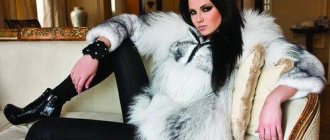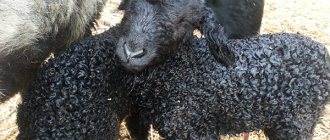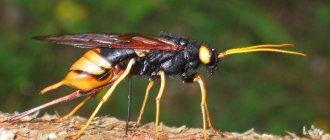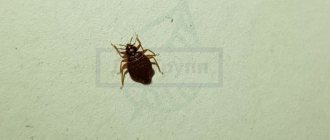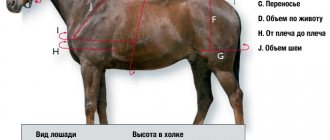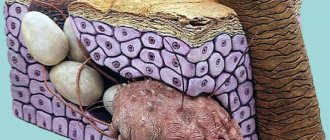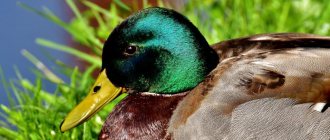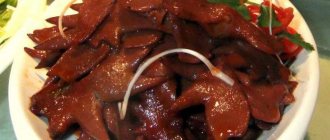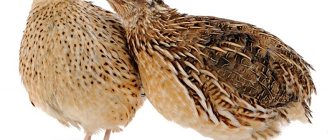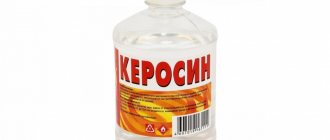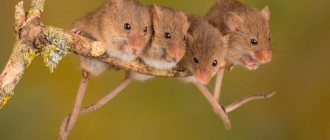And among people there are more copies than originals.
Pablo Picasso
Modern industry, using the latest technologies, is capable of producing artificial furs that are practically indistinguishable from the fur of some types of animals. How to spot a fake, how to identify it using improvised means?
The technologies of modern light industry have reached such perfection these days that, when buying a fur coat, we can no longer be completely sure that it is made of natural fur. Ideal imitations of fox, mink, beaver, muskrat, seal, and raccoon filled the counters and fitting rooms of fur salons. However, some brands have deliberately abandoned the use of natural fur in the manufacture of their models. This is due to the “green” movement, which has serious weight in society. Let's look at faux fur, weigh the pros and cons of using this material and purchasing outerwear made from it, and draw our own conclusions based on this.
Where to buy
You can buy a fur product in a specialized store or company showroom. Here, all samples will be accompanied by quality certificates and a guarantee. So you don’t have to doubt the authenticity of the fur. However, in such a place you will overpay for the brand.
You can make a cheaper purchase at a clothing market or small shops. In this case, it is better to contact those who have been in this business for several years and have established themselves as a reliable seller.
Label
Particular attention must be paid to the label and the information contained on it. If you don’t know how to distinguish faux fur from natural fur, at least read what the manufacturer indicated. All information about the composition of the fur, its origin must be indicated, the features of using the product, as well as the subtleties of caring for them must be reflected. The absence of a label should be a red flag. In 2010, a document was adopted in the Russian Federation obliging manufacturers of fur products to provide complete and reliable information about the materials used.
Features of real fur
No matter how much the seller praises his product, it is still better to see for yourself its quality.
- Today we have learned to produce synthetic fur of excellent quality, which is hardly distinguishable from the real thing. Run your hand through the fur. It should be smooth and tender to the touch, but at the same time dense. It's like ironing silk fabric.
- Crumple the edge of the product. The area that has easily restored its shape will indicate the authenticity of the fur.
- Smell the product. It should smell like tanned leather, but not like paint or synthetics.
- Under the lining there should be a stamp from the manufacturer of the product with information about the origin of the fur.
By the way, read this article too: How to distinguish an original Off-White from a fake
How to check in different ways
There are several ways to quickly distinguish natural fur from synthetic fur.
How to determine by touch
Natural wool always feels smooth and soft to the touch. If you run your hand over it, the villi will quickly return to their previous position. You can squeeze the product in your palm and then release it. Natural flesh will instantly return to its previous position, as it has a high degree of elasticity.
You can also notice that this fur is a little itchy. If you run your hand over it, the fibers will pass through your fingers, as if you were petting a cat. It is worth paying attention to the undercoat - it should be quite thick and soft. In addition, the natural material is always a little cool to the touch, and has a beautiful shine when exposed to sunlight.
Don’t forget that the fur of different animals feels different to the touch. Mink hair is quite hard, while beaver hair is very fluffy. The silver fox can be recognized by the presence of three different colors on each hair. And its skin is soft and warm to the touch.
Fire test
Another way to check the naturalness of fur is to set it on fire. This must be done carefully by pulling out a few fibers and bringing the fire to them. When real animal fur is burned, an unpleasant smell of burnt hair will be felt. In this case, the material will burn, leaving behind only ash.
Synthetics will begin to melt, and as a result will turn into a ball of plastic. The process produces a very unpleasant chemical odor. The complexity of this method is that not every seller will allow this experiment. Therefore, you can determine the quality by fire only after purchase.
Pierce with a pin
A pin or needle is another simple method for determining whether the fur you are looking at is real. Use the tip of the tool to carefully pierce the product. In the case of animal skin, the needle will be very difficult to enter, but the artificial fabric base can be pierced quite easily. You also need to pay attention to the hole that remains after the experiment. If you pull the skin in different directions, it should not increase.
Basics test
You can verify its naturalness by carefully examining the base and spreading the hairs apart. In the case of faux fur, it is always fabric, stretchy, you can see threads on it, and this immediately catches your eye. Natural products are distinguished by a smooth leather base. It is also worth paying attention to its color. A high-quality real animal skin will be white or very light, but if it is colored, then most likely it has been dyed.
Important: high-quality fur does not require painting. Often, manufacturers dye and cut it in order to hide any defects.
As you can see, you can always check whether the fur in front of you is natural or artificial. But every year it becomes more and more difficult to distinguish them. Modern technologies allow manufacturers to imitate natural materials as efficiently as possible, which causes many difficulties when choosing a product. In order to correctly identify all the differences and purchase a truly high-quality fur coat or sheepskin coat made of natural fur, you need to be very careful and use all the above recommendations.
Distinguishing fur
It often happens that the fur seems to be natural, but not from the animal that the seller insists on. In order not to buy cheap fur for crazy money, remember the following:
- – mink fur can be replaced with the fur of a rabbit, marmot or steppe mink. Real mink fur feels like oil and has a dense, even pile. Its hairs are of equal length, with a soft undercoat. Each villi tapers from root to tip. Mink skins are monochromatic, but the degree of coloring should be different.
- -beaver fur has a dense undercoat. It feels very soft and fluffy. Usually they try to pass it off as nutria fur, which is tougher and shorter.
- -silver fox fur is long and soft to the touch. Each of its fibers includes three shades of color.
How to distinguish natural fur from artificial fur in boots?
You need to carefully set fire to a few fibers. If, when they burn, ash is formed and a characteristic smell of burnt hair appears, the item is made of real fur. If the pile does not burn when ignited, but melts, turning into balls, and emits an unpleasant chemical aroma, it is of unnatural origin.
Interesting materials:
How to call an ambulance by cell phone in Volgograd? How to call an ambulance from a mobile phone in Belarus? How to call an ambulance from an MTS cell phone? How to archive a document on your phone? How to block a contact on Skype on your phone? How to block on Badu from your phone? How to block a number on a mobile phone? How to block another subscriber's phone number? How to block a phone number in Samsung Galaxy? How to block a phone number with Welcome?
How to identify a real mink coat
A mink coat is the dream of almost every woman. It looks very rich and lasts a long time. Every lady feels like a queen in it. In order for the feeling to be exactly that, it is important to purchase a fur coat from real high-quality mink.
Appearance
Putting the fur coat on a flat surface, let's examine the fur. It should be shiny, monochromatic, with a slight striped pattern and varying color intensities. The color of natural mink is a palette of brown and gray shades, as well as pastel tones from blue to caramel.
Let's touch the fur. It should be hard and elastic, easily return to its original shape, and not prick. The dense undercoat is clearly visible in it, and above it there are guard hairs of the same length. If the fur is not dyed, then you can find white hairs in it.
By the way, read this article too: Fred Perry how to distinguish an original from a fake
Wrong side
As a rule, good manufacturers do not sew the lining to the fur coat. And you can calmly examine its underside. The reverse side of the skin has a light shade (if the fur has not been dyed). It must have a factory seal. Pieces of skins must be at least 15 by 15 cm in size and have the shape of an elongated trapezoid.
It is advisable that they be sewn together rather than glued - this way the fur coat will last longer.
We carefully inspect all seams.
A hemmed lining is a reason to doubt the quality of the item.
Napkin
Run a damp white cloth over the fur. After a natural mink there should be no traces left on it. If they appear, then either the mink is dyed, or it is not mink at all.
Price
As you know, a mink coat costs a lot of money. Therefore, if you are offered a mink product at a cheap price or at a discount, you should think about it. A low price may mean that it is either a fake or the fur of this mink is not of the best quality. The product could have been dyed to hide defects in the pile, or the skins may have been stretched too thin or glued together.
Can faux mink be called eco-fur?
Speaking about artificial mink, it is worth remembering that it is a product of the chemical, or more precisely, the oil industry based on nylon. Nylon production is by no means environmentally friendly, given the scale of environmental pollution. In addition, the faux fur itself is not biodegradable, which means that after serving 3-4 seasons, such a fur coat will replenish the landfill of non-degradable waste. The list of consequences will also be supplemented by the dyeing of artificial fur, the raw materials for which all come from the same chemical industry.
Thus, the name “eco-fur,” which is often applied to faux fur, is just a marketing technique. It is at least incorrect, because the production and disposal of this material does not meet the interests of the environment.
Is there a way to guarantee the right choice when buying a natural mink coat?
The answer to this question lies on the surface: buy from a reliable seller. They will always say in his favor:
- the period during which it is present on the fur market;
- customer reviews that are not pre-moderated and are freely available;
- the opportunity or to make a proposal directly to the administration of the fur company.
All these characteristics are fully met by the Fur Academy, which invites you to showrooms and offers to use the company’s service, where you will buy a fur coat with home delivery, no matter in which city in Russia and neighboring countries you live.
When choosing and purchasing a fur coat made of natural fur, pay attention to the special labels that come with each item: these are control identification marks equipped with an electronic chip. It contains all the information about this fur coat: by whom, when, from what material it was made.
We wish you successful shopping and great pleasure from owning a natural mink coat!
How to distinguish a mink coat from a fake in practice?
The difference between a mink and a fake begins with its cost.
If they make you a very lucrative offer, offering a crazy 50-70% discount on a fur product (supposedly due to a sale), look for a catch - most likely, they are selling you a fake. The fur of an expensive animal cannot be cheap. The cost of the finished product, in addition to the cost of the fur itself, also includes the cost of tailoring, and working with fur, especially natural, requires a certain skill, which is also assessed accordingly. It is not recommended to buy fur products in unknown online stores without the right to try on and check the fur, where the buyer can distinguish a fake only after the purchase.
How can you verify the quality of a mink coat in practice? Here are a few life hacks on how to distinguish a mink coat from a fake:
- Shake the product, squeeze its edges, crumple the fur. This way you can determine whether the fur coat is rattling or whether it has been overdried.
- Examine the fur for creases. If they are present, this means that the product has holes.
- Gently tug the lint. It shouldn't be left in your hands.
- Check your armpit area. They should not be soft, as this indicates that someone has already worn this outerwear.
- The mink should have a uniform color. Otherwise, it is either faux fur or the hair of another animal.
- Try wiping the fur with a white napkin. Any traces on its surface will confirm that the product has been painted.
- Smell the fur. The smell of chemicals or dried animal fat may indicate that the fur processing process has been disrupted.
- Inspect the seams. They should be smooth and strong, using an elastic thread; ideally, the lining is sewn by hand.
- Check the label. It should contain detailed information about the country and place of production of the fur product, as well as contact details of the manufacturer.
Knowing how to distinguish a fake, you can purchase a quality product that will last for many years, decorating you and keeping you warm in any weather.
Which animals' fur becomes fake?
Mink fur is quite expensive.
To earn more, some unscrupulous sellers pass off fur coats made from rabbits, marmots and other animals as mink products. To do this, the fur can be cut, dyed, etc. But if the appearance of a fur coat can be easily changed, then it is not so easy, even impossible, to influence the properties of the fur. Different animals have fur that has its own distinctive features, which will help you distinguish a real mink from a fake. Instead of mink, scammers most often offer skins from:
- A rabbit. It has a very soft pile, the color is not the same and not uniform along the entire length of the product, and if you stroke the fur with your hand, lint remains on the palm.
- Beaver. It has fairly hard fur and a very thick interior.
- Groundhog. If you stroke the fur against the growth of the pile, it will become shaggy, since its plasticity index is minimal. In the sun a blue tint appears, the fur has different lengths.
- Ferret. The main difference is the color: the fur at the ends is darker, and the underfur is light. Only straight products are sewn from ferret fur, since in other cases the seams will be visible.
- Honorica. It is very difficult to distinguish the fur of natural honorica. The only thing that gives this animal away is its black color with a thick brown undercoat. Otherwise, this is the most perfect fake, because this animal was bred by crossing with the participation of mink.
In addition to natural animal fur, artificial fur coats can also act as fakes. Moreover, in response to the buyer’s remark that a mink coat looks strange, inventive scammers refer to the fact that this is a type of animal.
How to recognize an artificial analogue?
The times when it was possible to distinguish an artificial imitation from the real thing simply by looking at the product are long gone. Modern artificial products are in no way inferior to natural ones, and sometimes even surpass them in certain characteristics.
| Characteristic | Comparative Description |
| Shine | Natural fur shines brightly, shimmers and sparkles. Artificial hair is matte; the hairs do not reflect light, but absorb it. |
| Weight | A real fur coat is light; the main weight of the product is the mass of insulation under the lining. Imitation is much harder. |
| Compactness | The original product folds easily and takes up little space when folded. Imitations are much more cumbersome. |
| Certificate of Quality | A quality certificate is available for both natural and artificial fur coats. If the seller claims that this document does not exist, then this is a good reason to doubt the origin and quality of the item. |
Of course, it will not be difficult to distinguish a not particularly high-quality imitation, which has a fabric base rather than leather, from natural fur.
Have you ever asked your husband to buy you a fur coat?
Not really
Distinctive characteristics of old fur
A real fur coat, made from whole skins and not dyed, may also not be of high quality. If the product is made from old fur, the fur coat will not last long.
| Characteristics | Description of features |
| Leather base | If the fur has been lying around for a long time, the leather base turns yellow. In addition to the color change, some areas may become parchment-like, and grease stains may appear. |
| Smell | Old mink has a specific smell, like hair that hasn't been washed for a long time. Sometimes the smell becomes rancid. New, fresh fur has no smell. |
| Coloring | Over the years, the fur turns yellow. This shade is especially noticeable on white and blue-gray mink. |
The older the fur, the lower its quality. The skins lose their plasticity and strength, they can “crawl” along the seams and harden.
